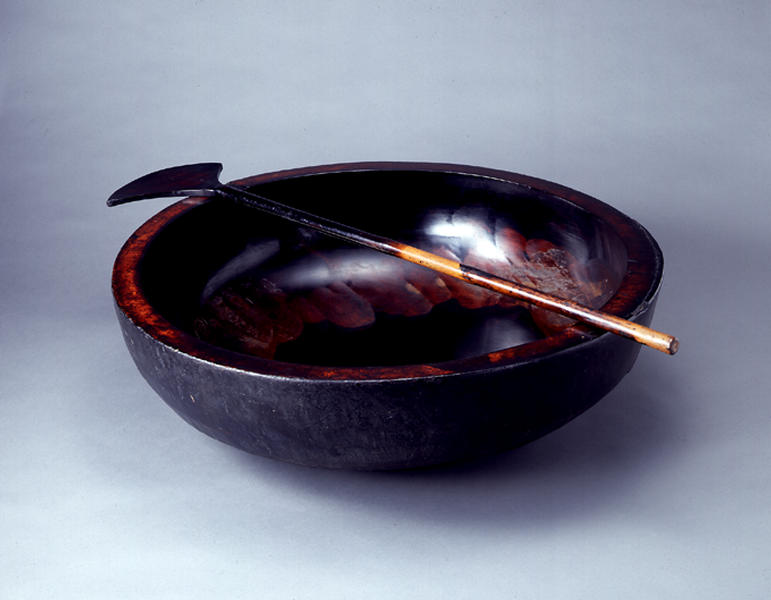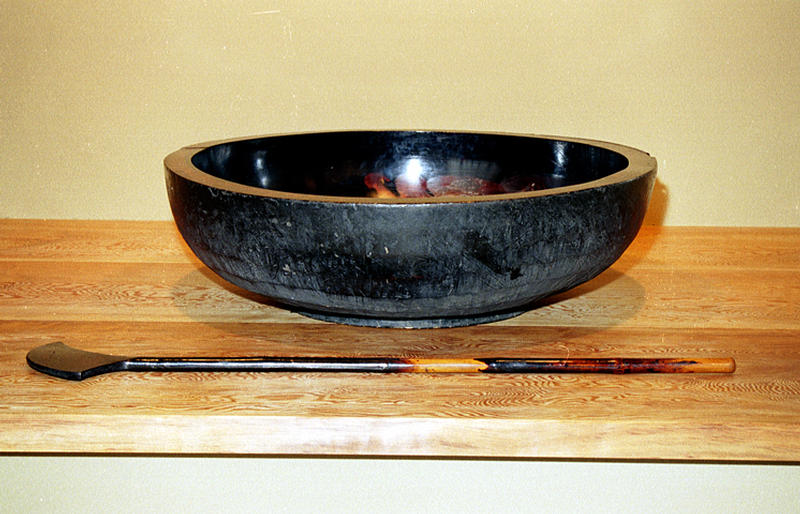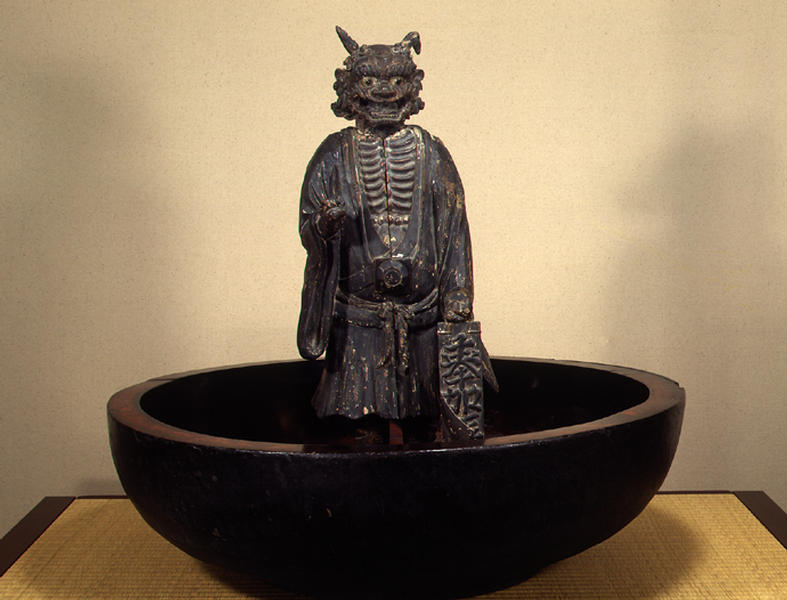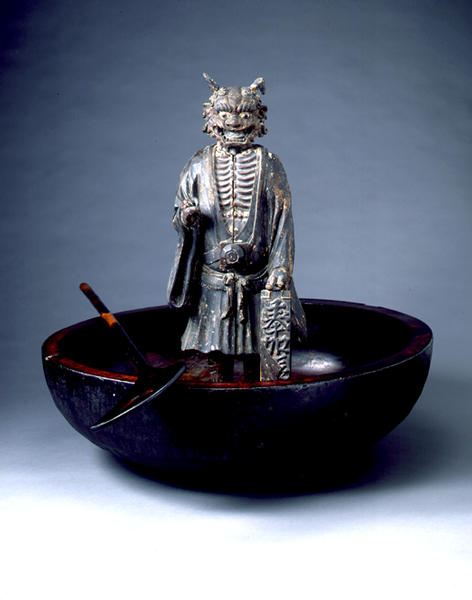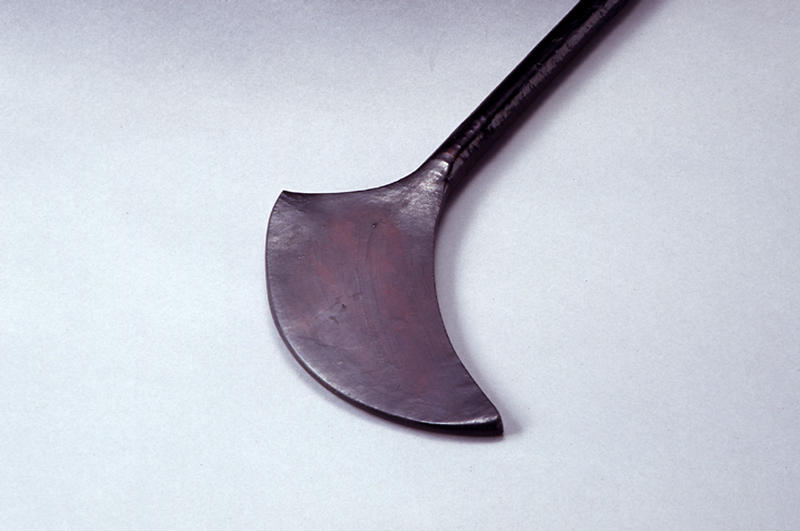くろめ鉢
- 江戸時代
- 18-19c
- 木製
- H-32.5 D-106
解説(春の玉手箱)
この大鉢はくろめ鉢と呼ばれるもの。漆の木から採取した樹液はしばらく寝かされたのちこの鉢に移され、付属の櫂を使って天日のもと数時間攪拌される。この工程は「なやし・くろめ」と呼ばれ、余分な水分を飛ばして漆の粒子を細かくする働きがあり、この工程からうるし特有の潤沢な輝きが生まれる。漆は貴重なため、鉢に付着した分を丁寧にこそぎとるうちに、自然に漆工品のような美しさが備わり、ものを無駄にしないという精神が、長い間に備品である鉢をこのように美しく育てたものであろう。
Catalogue Entry
This large bowl is known as a "kurome bachi," or literally, "blackened bowl." When sap is taken from the lac tree, it is left to sit for awhile and then transferred to this type of bowl. Using an accompanying paddle, this bowl full of lacquer would then be placed in the sun and stirred for several hours. This process is called "nayashi kurome" and the process of splashing considerable amounts of water onto the lacquer then makes the lacquer particles all the finer. This process gives lacquer its distinctive glossy shine. Lacquer is a precious commodity, and so the lacquer that would stick to these mixing bowls was carefully scraped away, giving this bowl a lovely natural lacquered finish. The beauty of this bowl has emerged from its long, careful use; such outer beauty reflects the inner spirit of not wasting precious resources.
